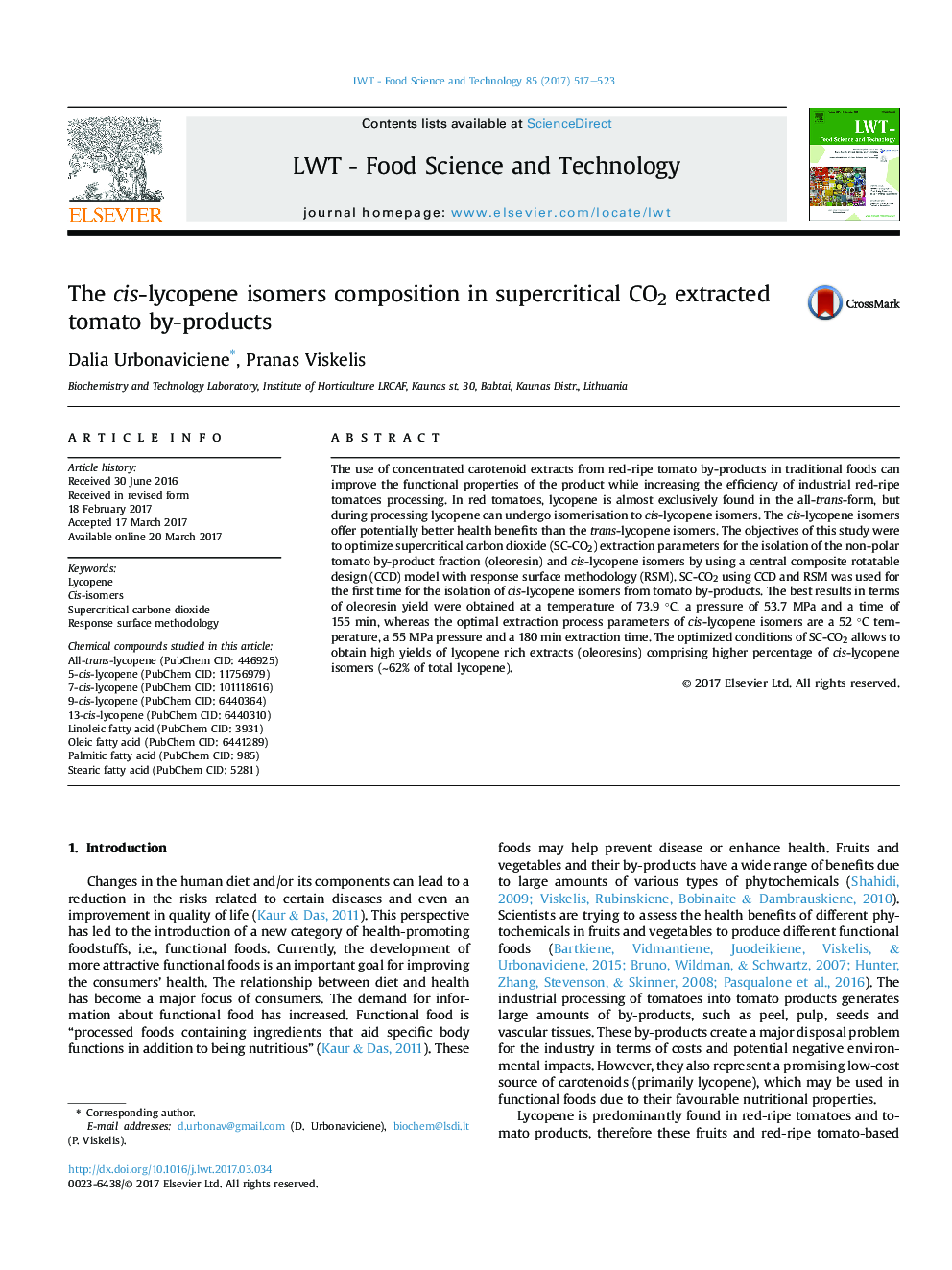| Article ID | Journal | Published Year | Pages | File Type |
|---|---|---|---|---|
| 5768416 | LWT - Food Science and Technology | 2017 | 7 Pages |
â¢Tomato by-products oleoresin was extracted using supercritical CO2.â¢Optimal conditions for cis-lycopene isomers extraction was determined.â¢Full factorial design was used to understand the effect of process variables.â¢The optimum conditions were 52 °C, 55 MPa and 180 min.
The use of concentrated carotenoid extracts from red-ripe tomato by-products in traditional foods can improve the functional properties of the product while increasing the efficiency of industrial red-ripe tomatoes processing. In red tomatoes, lycopene is almost exclusively found in the all-trans-form, but during processing lycopene can undergo isomerisation to cis-lycopene isomers. The cis-lycopene isomers offer potentially better health benefits than the trans-lycopene isomers. The objectives of this study were to optimize supercritical carbon dioxide (SC-CO2) extraction parameters for the isolation of the non-polar tomato by-product fraction (oleoresin) and cis-lycopene isomers by using a central composite rotatable design (CCD) model with response surface methodology (RSM). SC-CO2 using CCD and RSM was used for the first time for the isolation of cis-lycopene isomers from tomato by-products. The best results in terms of oleoresin yield were obtained at a temperature of 73.9 °C, a pressure of 53.7 MPa and a time of 155 min, whereas the optimal extraction process parameters of cis-lycopene isomers are a 52 °C temperature, a 55 MPa pressure and a 180 min extraction time. The optimized conditions of SC-CO2 allows to obtain high yields of lycopene rich extracts (oleoresins) comprising higher percentage of cis-lycopene isomers (â¼62% of total lycopene).
